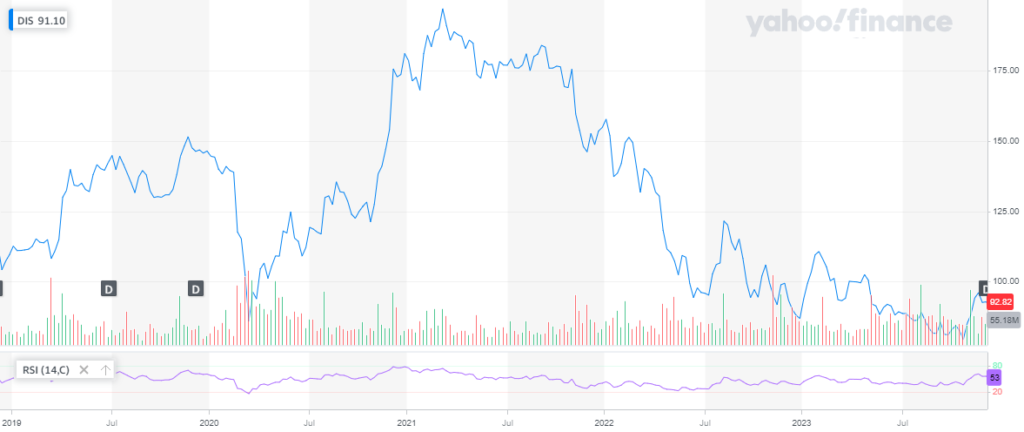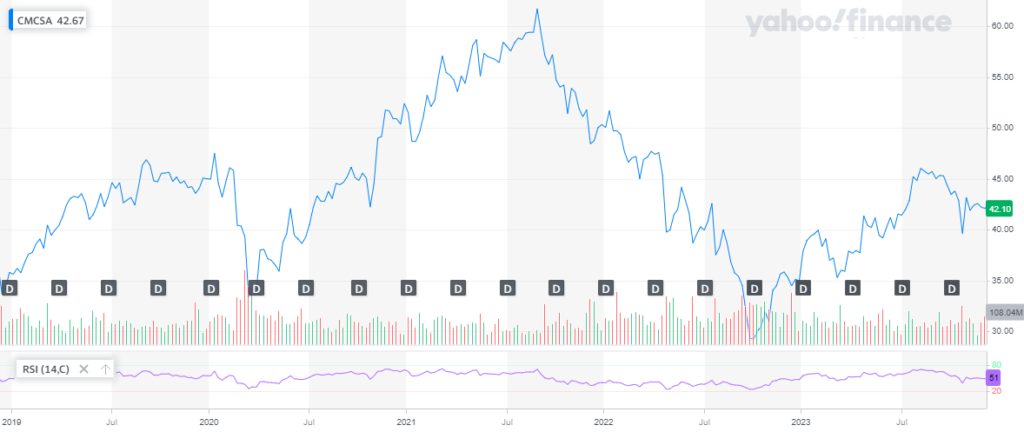Introduction
A Comprehensive Insight into Hulu and its Streaming Industry Impact
Hulu, a trailblazer in the streaming industry, has significantly reshaped the entertainment landscape since its inception in 2008. Known for its strategic offering of current TV episodes alongside an extensive library of shows, movies, original content, live TV, and sports, Hulu has successfully positioned itself as a formidable competitor to giants like Netflix and Amazon Prime Video. With a remarkable revenue exceeding $10 billion and a robust subscriber base of over 40 million, Hulu’s influence in the streaming sector is undeniable.
The Unique Investment Avenue: Indirect Paths to Investing in Hulu
For investors keen on tapping into Hulu’s burgeoning market presence, there’s a catch: Hulu is not publicly traded. This means that direct investment in Hulu stock is not an option. However, there exists a strategic alternative — investing in Hulu through its parent companies, Disney (NYSE: DIS) and Comcast (NASDAQ: CMCSA).
By purchasing stocks of these media conglomerates, investors indirectly gain exposure to Hulu’s performance and prospects. This approach is not just about investing in Hulu; it’s about engaging with the broader dynamics of the entertainment industry, considering the comprehensive portfolios of Disney and Comcast. It represents a blend of opportunities and challenges, shaped by the overall market performance and business strategies of these parent companies.
Investing in Hulu through Disney and Comcast is a nuanced venture, offering a window into the streaming giant’s growth while weaving in the broader narrative of the media landscape. For those looking to capitalize on Hulu’s success, understanding this indirect investment route is crucial, combining keen market insight with a strategic understanding of Disney and Comcast’s expansive operations.
Hulu’s Ownership Structure
Current Ownership: The Disney and Comcast Partnership
Hulu’s current ownership structure is a testament to its strategic importance in the streaming industry. The platform is primarily owned by two media powerhouses: The Walt Disney Company and Comcast Corporation. Disney holds a commanding 67% majority stake, making it the predominant force in Hulu’s operations and decision-making. Comcast, with a 33% minority stake, also plays a significant role in Hulu’s trajectory. This joint ownership has been pivotal in steering Hulu’s content strategy, technological advancements, and market positioning.
Hulu’s Evolution: From a Joint Venture to a Media Powerhouse
Hulu’s journey began in 2006 as a joint venture, initiated by several major media players, including NBC Universal, News Corporation, and later, The Walt Disney Company. This collaborative venture was a strategic response to the burgeoning online streaming trend and the rising demand for on-demand content. Hulu’s early model focused on providing viewers access to current TV shows and episodes, a niche that rapidly garnered viewer attention and set Hulu apart in the streaming space.
Over the years, Hulu’s ownership underwent several shifts. The Walt Disney Company began investing in Hulu in 2009, marking the start of a significant transformation. Hulu evolved from a free service with ad-supported content to a subscription-based model, offering an array of content that included live TV and sports, alongside traditional streaming offerings. These changes not only expanded Hulu’s subscriber base but also increased its market valuation and strategic importance.
Details of Disney’s Majority Stake and Comcast’s Minority Stake
Disney’s majority stake in Hulu is a cornerstone of its streaming strategy, positioning it as a key player in the battle for online viewership. Disney’s control over Hulu enables synergistic content strategies and cross-platform promotions, particularly with Disney’s own streaming service, Disney+. This majority stake is not just a financial investment but a strategic move that aligns Hulu with Disney’s broader entertainment empire, including its extensive content library from various studios and networks.
On the other hand, Comcast’s minority stake in Hulu represents a significant investment in the streaming arena. Despite being a smaller portion, Comcast’s stake in Hulu is a valuable asset, complementing its own media and entertainment portfolio. This investment reflects Comcast’s commitment to remaining a significant player in the evolving media landscape, leveraging Hulu’s platform to bolster its position in the streaming market.
Hulu’s Market Position and Growth
Analysis of Hulu’s Revenue, Subscriber Base, and Market Share
Hulu has made remarkable strides in the streaming industry, evident in its financial and subscriber metrics. As of 2023, Hulu boasts a staggering revenue of over $10 billion and a subscriber count exceeding 40 million. This financial prowess highlights Hulu’s strong market position and the growing appeal of its streaming services. Hulu’s market share, holding approximately 18% of the subscription video-on-demand (SVOD) sector, positions it as a significant player, second only to Netflix in this domain. This market share is reflective not only of Hulu’s content variety but also its effective business strategies that resonate with a diverse viewer base.
Comparison with Competitors like Netflix and Amazon Prime Video
Hulu operates in a highly competitive landscape, dominated by giants like Netflix and Amazon Prime Video. Netflix, with its massive global subscriber base and a rich library of original content, has long been the industry leader. However, Hulu has been gaining ground, especially with its unique offerings like current TV episodes and live TV options.
Amazon Prime Video, another key competitor, brings a different flavor to the streaming arena with its integration into the broader Amazon ecosystem. While these platforms differ in content strategies and viewer experiences, Hulu has carved out its niche through a balanced mix of on-demand content, original programming, and live television, making it a competitive alternative in this highly contested market.
Discussion on Hulu’s Business Model: Subscription Plans and Advertising Strategies
Hulu’s business model is a blend of innovative subscription plans and strategic advertising. The platform offers a range of subscription options, catering to varied viewer preferences. These include:
- Ad-Supported Plans: These plans are more affordable and have been pivotal in attracting a broader user base. Despite the presence of ads, these plans offer access to Hulu’s extensive content library, including original programming.
- Ad-Free Plans: For viewers who prefer uninterrupted viewing, Hulu offers ad-free subscriptions, providing an enhanced user experience at a higher price point.
- Hulu + Live TV: This plan includes live television channels and cloud-based DVR capabilities, appealing to users looking for a comprehensive entertainment package.
Hulu’s advertising strategy is another key component of its business model. By offering ad-supported plans, Hulu has created a lucrative avenue for targeted advertising. The platform utilizes viewer data to tailor ads, making them more relevant and effective, and thereby attractive to advertisers. This dual revenue stream from subscriptions and advertising has been a cornerstone of Hulu’s financial success and market growth.
Investing in Hulu via Disney (NYSE: DIS)

Overview of Disney’s Role in Hulu and Its Other Media Assets
Disney’s majority stake in Hulu is a pivotal aspect of its expansive media empire. As the owner of 67% of Hulu, Disney wields considerable influence over Hulu’s strategic direction, content decisions, and overall business model. This ownership ties Hulu’s success directly to Disney’s broader performance in the entertainment sector.
Disney’s media assets extend far beyond Hulu, encompassing a vast array of entertainment properties. These include its iconic theme parks, a vast library of films and TV shows, and other streaming services like Disney+ and ESPN+. Disney’s acquisition of 21st Century Fox further bolstered its content repository, adding popular franchises like X-Men, Avatar, and The Simpsons. This diverse portfolio makes Disney not just a leader in traditional media but also a formidable force in the streaming world.
Advantages and Potential Risks of Investing in Disney as a Way to Gain Exposure to Hulu
Investing in Disney stocks offers investors a way to indirectly benefit from Hulu’s growth, but it’s not without its considerations:
Advantages:
| Advantage Factor | Description |
|---|---|
| Diversified Portfolio | Disney’s extensive portfolio includes theme parks, movies, TV networks, and other streaming services like Disney+ and ESPN+. This diversification can mitigate risks associated with any single business segment. |
| Growth Potential | With Hulu as part of its portfolio, Disney has a strong presence in the growing streaming market. Hulu’s growth potential contributes to Disney’s overall valuation and appeal to investors. |
| Synergistic Opportunities | Disney’s ownership of Hulu allows for cross-promotion and content integration across its various platforms, potentially creating unique viewing experiences and increasing subscriber engagement. |
| Brand Strength | Disney’s globally recognized brand and reputation for quality content can positively impact Hulu’s market position and attract a loyal subscriber base. |
| Content Library Access | Disney’s acquisition of 21st Century Fox and other content assets provides Hulu access to a wide range of popular and exclusive media content, enhancing its competitive edge in the streaming market. |
Risks:
| Risk Factor | Description |
|---|---|
| Market Volatility | Disney’s broad portfolio, including theme parks, movies, and streaming services, makes it susceptible to various market forces, such as economic downturns or shifts in consumer entertainment preferences. |
| Competitive Industry | The streaming market is highly competitive. Hulu, as part of Disney’s portfolio, needs to continually innovate and adapt to maintain its market position against rivals like Netflix and Amazon Prime Video. |
| Dependency on Broader Performance | Investing in Disney primarily for Hulu exposure means the investment’s success is tied to Disney’s overall performance across all its business segments, not just Hulu’s streaming success. |
| Regulatory and Legal Challenges | Disney, being a global media conglomerate, faces various regulatory and legal challenges that can impact its overall business operations, including Hulu. |
| Technological Disruptions | Rapid technological changes in the media and entertainment industry could pose challenges to Disney’s current business model, affecting its streaming services like Hulu. |
Future Prospects of Disney’s Ownership in Hulu
Disney’s future plans for Hulu are a crucial aspect for potential investors. Disney is expected to acquire Comcast’s remaining stake in Hulu by 2024, which would give Disney complete control over Hulu’s operations. This consolidation could lead to more integrated content strategies across Disney’s various streaming platforms, potentially increasing the value of Hulu’s offerings.
Moreover, Disney’s control over Hulu opens doors to exclusive content access from its vast array of studios. This can lead to unique programming that might be exclusive to Hulu or shared across Disney’s other streaming platforms, further enhancing the appeal of Hulu’s content library.
Investing in Hulu via Comcast (NASDAQ: CMCSA)

Overview of Comcast’s Stake in Hulu and Its Other Media Ventures
Comcast, a global media and technology conglomerate, holds a significant 33% minority stake in Hulu. This stake represents a crucial part of Comcast’s portfolio in the streaming industry. However, Comcast’s interests span far beyond Hulu, encompassing a vast range of media and telecommunication ventures. Key aspects of Comcast’s portfolio include:
| Comcast’s Portfolio Component | Description |
|---|---|
| Peacock | Comcast’s own streaming service offering a mix of original programming, live sports, and a diverse range of TV shows and movies. |
| NBCUniversal | A major player in broadcast and cable television, encompassing a range of popular networks and production studios. |
| Sky | A leading provider of pay-TV, broadband, and mobile services, primarily serving customers in Europe. |
| Xfinity | Provides cable TV, internet, and phone services, known for its extensive coverage and bundle offerings in the United States. |
| DreamWorks Animation | A renowned film production studio, famous for creating high-profile animated movies and television series. |
| Universal Studios | One of the oldest and most famous Hollywood film studios, producing and distributing a wide range of movies and television content. |
This diverse portfolio positions Comcast as a robust player in the media and technology sectors, offering investors exposure to a broad spectrum of the entertainment industry.
Analysis of the Potential Impact of Comcast’s Future Sale of Its Hulu Stake to Disney
Comcast has announced its intention to sell its Hulu stake to Disney by January 2024. This impending sale is significant for several reasons:
- Market Dynamics: The consolidation of Hulu under Disney could lead to strategic shifts in content and operations, potentially impacting Hulu’s market position.
- Investment Value: The sale might alter the valuation of Hulu, influencing the overall worth of Comcast’s investment and, subsequently, its stock value.
- Strategic Realignment: Post-sale, Comcast might redirect its focus and resources towards its other ventures like Peacock, possibly influencing its market strategy and investment appeal.
Evaluation of Comcast’s Overall Market Position and Its Implications for Hulu Investors
Comcast’s market position as a leading media conglomerate offers both opportunities and challenges for investors looking to gain exposure to Hulu:
- Diversified Interests: Comcast’s varied business segments provide a buffer against market volatility in the streaming sector.
- Competitive Landscape: With the looming sale of its Hulu stake, Comcast’s focus may shift more towards bolstering its own streaming service, Peacock, and other media ventures.
- Future Growth Prospects: Comcast’s investments in digital infrastructure and content creation indicate potential growth areas that could benefit investors.
The Potential for a Hulu IPO
Exploration of the Possibility and Implications of a Hulu IPO
The idea of a Hulu Initial Public Offering (IPO) has been a topic of speculation among investors and industry analysts. While there are no immediate plans for Hulu to go public, the possibility remains a topic of interest due to its significant market position and growth trajectory. An IPO would not only provide Hulu with an influx of capital but also mark a significant shift in its operational and strategic dynamics. For the streaming industry, a Hulu IPO would introduce a new publicly traded entity, potentially reshaping market dynamics and offering investors a direct stake in one of the leading streaming platforms.
Analysis of How a Hulu IPO Could Affect the Streaming Industry and Existing Investors
A Hulu IPO could have several impacts on the streaming industry and its stakeholders:
- Increased Market Competition: As a public company, Hulu would likely ramp up its investments in content and technology, intensifying competition in the streaming sector.
- Investor Attraction: Hulu’s entry into the public market could attract a new set of investors, drawn by the company’s robust subscriber base and innovative content strategies.
- Shareholder Value: Existing investors in Disney and Comcast might see changes in the value of their investments, as a Hulu IPO would alter the financial dynamics of these parent companies.
Discussion on the Decision-Making Factors for Disney and Comcast Regarding a Hulu IPO
Several factors would influence Disney and Comcast’s decision to pursue a Hulu IPO:
| Decision-Making Factor | Description |
|---|---|
| Valuation | Assessing Hulu’s market valuation to determine the potential financial success and attractiveness of an IPO. |
| Strategic Fit | Evaluating how a public Hulu aligns with Disney and Comcast’s broader corporate strategies and streaming endeavors. |
| Market Conditions | Considering the current state of the stock market and investor interest in media and tech stocks, which would impact the timing and success of an IPO. |
| Regulatory Considerations | Understanding and navigating potential regulatory hurdles and legal complexities involved in transitioning Hulu from a joint venture to a public company. |
| Control and Influence | Deciding the degree of control and influence over Hulu that Disney and Comcast wish to maintain post-IPO, which could affect their future strategic directions. |
Strategic Considerations for Investors
Assessment of the Pros and Cons of Investing in Hulu Indirectly
Investing in Hulu indirectly through Disney (NYSE: DIS) and Comcast (NASDAQ: CMCSA) presents both opportunities and challenges:
Pros:
- Diversification: Investing in Disney or Comcast offers a diversified portfolio, as both companies have extensive operations beyond Hulu.
- Growth Potential: Hulu’s strong position in the streaming market can contribute to the parent companies’ overall growth.
- Lower Risk: Indirect investment reduces the risk compared to investing in a single product or service, as the parent companies have multiple revenue streams.
Cons:
- Diluted Impact: The success of Hulu may only have a limited impact on the parent companies’ overall performance, given their size and range of operations.
- Complex Market Dynamics: Understanding the broader media landscape, including other businesses of Disney and Comcast, is crucial and can be complex.
- Share Price Volatility: The parent companies’ stocks are subject to market volatility influenced by a wider range of factors beyond Hulu’s performance.
If you are looking for a right broker to start investing, we have a referal link for you to Interactive Brokers. With registering via this link you can also earn up to USD 1,000 in IBKR stock (NASDAQ: IBKR).
Guidance on Monitoring the Streaming Market and Hulu’s Position Within It
Investors should actively monitor the streaming market to make informed decisions:
- Stay Updated with Industry Trends: Keep abreast of the latest trends in the streaming industry, such as subscriber growth, content acquisition strategies, and technological advancements.
- Financial Reports and Earnings Calls: Regularly review financial reports and earnings calls of Disney and Comcast to gauge Hulu’s contribution to their revenue and growth strategies.
- Market Research Reports: Refer to market research reports for insights into the streaming industry’s competitive landscape and Hulu’s positioning.
Tips for Potential Investors on Staying Informed and Making Educated Investment Decisions
For those considering investing indirectly in Hulu, consider these tips:
- Diversify Your Investments: Don’t rely solely on Disney or Comcast for exposure to the streaming market. Consider diversifying your portfolio across different companies and sectors.
- Long-Term Perspective: Understand that the streaming industry is rapidly evolving, and a long-term investment perspective may be necessary to realize potential gains.
- Consult Financial Advisors: Seek advice from financial experts, especially to understand the complexities of investing in large conglomerates like Disney and Comcast.
- Regularly Review Your Investment Strategy: The streaming market is dynamic, so regularly review and adjust your investment strategy as necessary.
- Stay Informed About Regulatory Changes: Be aware of regulatory changes that could impact the streaming industry and, consequently, your investment.
Conclusion
As we navigate the intricate landscape of investing in the streaming industry, particularly in Hulu via its parent companies Disney and Comcast, it’s essential to consider the multifaceted nature of such investments.
Key Takeaways:
- Indirect Investment Path: Direct investment in Hulu isn’t possible, but Disney (NYSE: DIS) and Comcast (NASDAQ: CMCSA) offer indirect avenues.
- Diverse Portfolio: Disney and Comcast’s broad range of operations provide a diversified investment, though with varying degrees of impact from Hulu’s performance.
- Dynamic Market: The streaming industry is fast-evolving, necessitating a flexible and informed investment approach.
- Strategic Monitoring: Keeping a close eye on market trends, company performances, and industry changes is crucial for making educated investment decisions.
If you are looking for a right broker to start investing, we have a referal link for you to Interactive Brokers. With registering via this link you can also earn up to USD 1,000 in IBKR stock (NASDAQ: IBKR).
Stay Informed and Engaged
For more insights into the fascinating world of media investments and the latest trends in the streaming industry, we invite you to check out our blog. Our blog is a treasure trove of information, offering in-depth analyses, market updates, and expert opinions to guide your investment journey.
Share Your Thoughts and Spread the Word
Found this article insightful? We encourage you to share it with your network. Whether you’re a seasoned investor or new to the streaming market, your perspective can spark meaningful conversations. Share this article on social media, with friends, or in investment communities to help others navigate the exciting yet complex world of streaming industry investments.
Your engagement helps build a community of informed investors. Let’s explore the future of streaming investments together!



